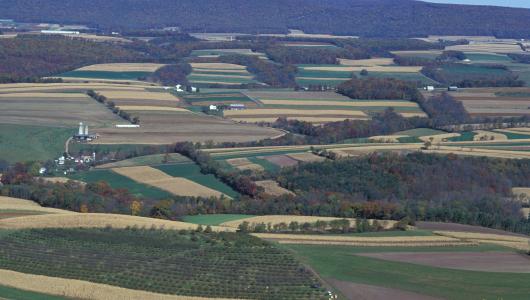I recently met with agricultural producers in three New England states. From a cranberry bog in Massachusetts to a Connecticut dairy and commercial fisheries in Rhode Island, one message remained clear: Producers have faced recent challenges with incredible tenacity and flexibility.
Whether you’re weathering the pandemic, overcoming retaliatory tariffs, facing natural disasters, or simply hoping to strengthen your operation, USDA offers programs and services to support your business needs. I enjoyed talking with New England producers about USDA, and I want to make sure farmers and ranchers across the country know about several critical USDA resources.

Coronavirus Food Assistance Program 2
Coronavirus Food Assistance Program 2, CFAP 2, builds upon the initial Coronavirus Food Assistance Program, CFAP 1. USDA is implementing CFAP 2 for agricultural producers who continue to face market disruptions and associated costs because of COVID-19. USDA will accept applications for CFAP 2 through December 11, 2020.
More than 300 commodities are eligible for CFAP 2, including some that were ineligible for CFAP 1. Our CFAP 2 Eligible Commodities Finder makes it easy to determine eligibility of the commodities you grow or raise and provides commodity-specific payment rates. We encourage all producers to visit farmers.gov/cfap to learn more about this program, including options to apply.
Seafood Trade Relief Program
If you are a U.S. fisherman or woman impacted by retaliatory tariffs, you may qualify for funding through the Seafood Trade Relief Program. STRP is part of a relief strategy to provide support while the administration continues to work on free, fair, and reciprocal trade deals.
Visit farmers.gov/seafood to learn more about program eligibility, including a list of seafood commodities covered through STRP and associated payment rates. Applications for STRP are due by December 14, 2020.

Disaster Assistance Programs
USDA is here to help you prepare for, recover from, and build long-term resilience to natural disasters. Several New England producers mentioned drought as a concern, and farmers and ranchers in other parts of the country are experiencing wildfires and hurricanes.
I encourage all agricultural producers to visit farmers.gov/recover for the latest USDA disaster assistance resources. You’ll find information on a range of USDA disaster assistance programs and an online Disaster Assistance Discovery Tool that provides targeted information through a few simple steps.
Most importantly, your local USDA Service Center is staffed with experts who know our disaster assistance programs inside and out.
Funding Opportunities
While the pandemic has brought incredible challenges, we’ve seen producers use innovation and technology to expand their agricultural businesses. One example is Oakridge Dairy in Connecticut. Faced with the coronavirus pandemic and a decrease in dairy prices, this operation is leveraging The Modern Milkman, a delivery service that includes milk, eggs, and dairy products, to serve customers in Connecticut and beyond.

USDA offers a variety of funding opportunities to help producers finance and grow their businesses. You can visit farmers.gov/fund for the latest USDA farm loans information and use our Farm Loan Discovery Tool to learn about loans options that might be right for you by answering five quick questions.
From headquarters through your local county office, we understand the inherent risks of agriculture and are committed to supporting America’s producers, offering critical resources to help you build, sustain, and grow your operation. The FSA office at your local USDA Service Center is there to help with your CFAP 2 and STRP applications and to assist with loans and even natural disasters. You can also contact our call center at (877) 508-8364 for additional one-on-one support. I encourage you to check the status of your local USDA Service Center and make an appointment to discuss your business needs.
Peggy Browne is USDA’s Deputy Administrator for Field Operations for the Farm Service Agency. Peggy can be reached at peggy.browne@usda.gov.


